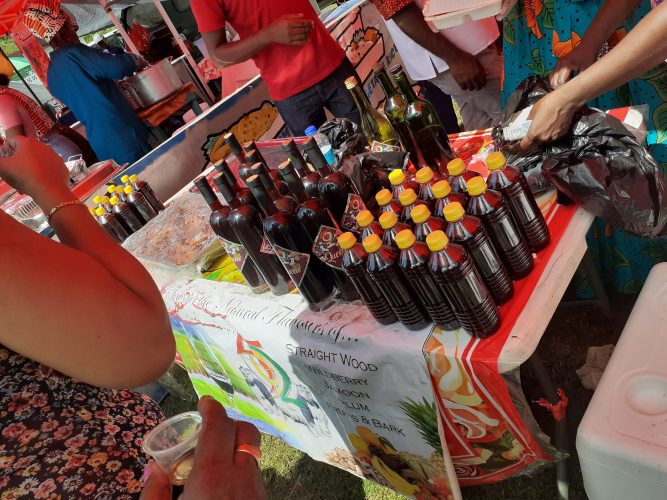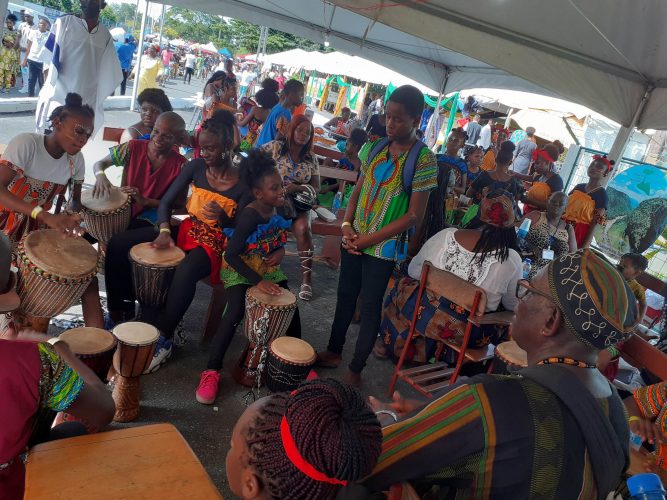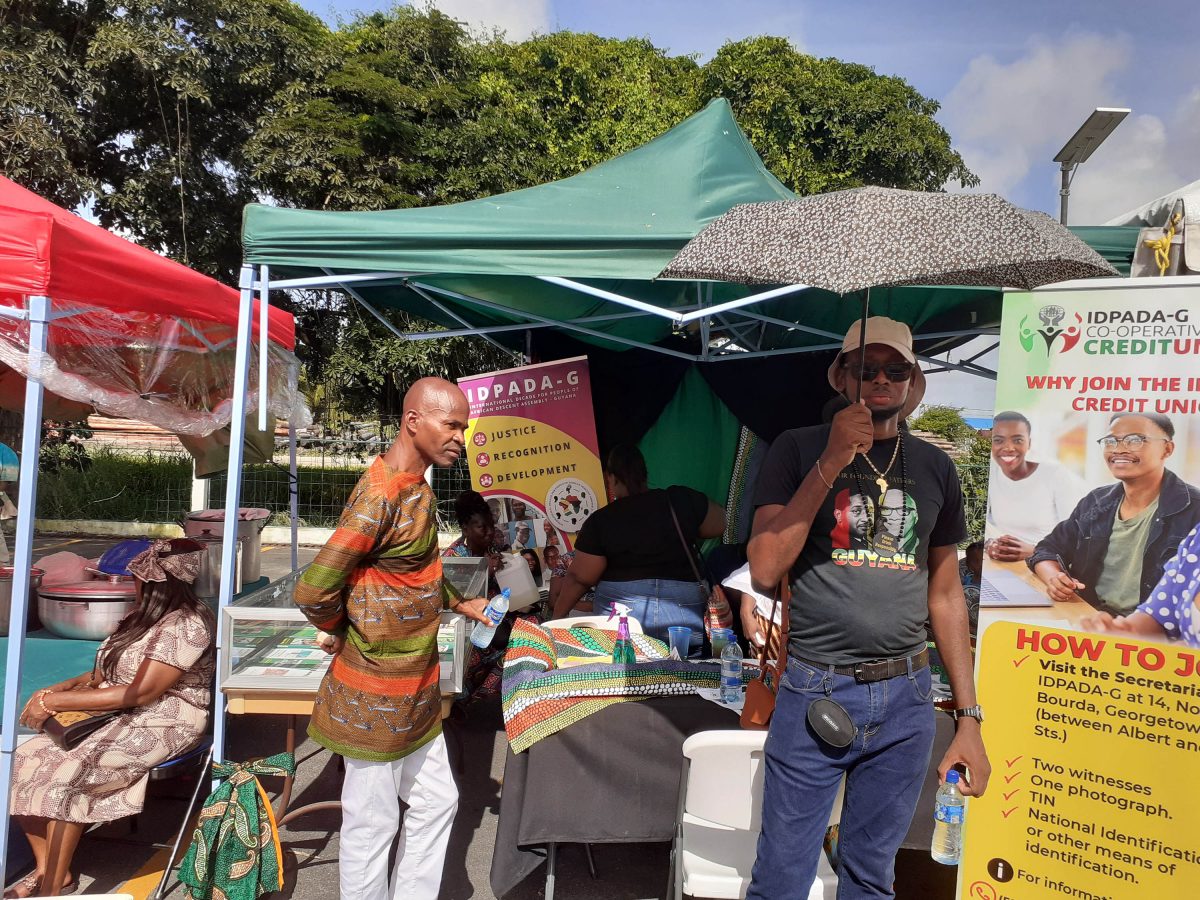Under the scorching sun, the African Cultural and Development Association (ACDA)-hosted Emancipation Celebrations yesterday returned to the National Park in a sea of vivid colours with thousands thronging the venue throughout the day.
There was a two-year hiatus in the celebration due to the Covid-19 pandemic.
At the National Park, the atmosphere could be described as one charged with African spirituality, dances, parades, drumming, steel pan music, fashion shows, paintings, crafts – activities designed for the entertainment of both children and adults. ACDA’s central plank within their Emancipation celebrations, which is the twinning of an African state with a village bought by freed slaves, once again featured prominently.


ACDA’s choice of village for Emancipation 2022 was Zambia, a village nestled in the rice farming sub region in Black Bush Polder, Region 6, Berbice. Then Zambia, the Southern African country was ACDA’s country of choice for this year’s Emancipation. According to the organisers, the village, Zambia, was established in 1964. Royston Peters, a member of ACDA, described Zambia, the country, as one of Guyana’s sister countries since both Zambia and the Guyana African Diaspora possess shared cultural heritage.
In their efforts to educate and inform the local African Guyanese community of their historical rootedness with continental Africa, an educational booth was erected with organisers explaining some of the traditions practiced in Zambia. During a visit to the booth, this reporter discovered how Zambian tribes derived their names from their languages. Some examples provided of languages and tribal identities include the Lozi, Tonga, Bemba, Kanode and the Luvale tribe. Zambia was also chosen because of its importance in the anti-colonial struggle for Independence, preserving of its cultural identity, history and African influences. Peters also said that the irony about Africans is that despite the contributions of the ancestors and slaves to their country, not much recognition is given to Africans. However, Peters says if credit is given to persons of African descent and their contributions recognized, true emancipation would become a reality.
As persons made their way through the various exhibition sites, attendees were invited to cool themselves with local fruit juices and Mauby. Some Diaspora African cuisines on display included foo-foo, conkie, cook-up rice and met-em-gee. A wine labeled ‘592’, identical to Guyana’s communication code, was on display and participants were invited to sample. Antwaun Austin, a vintner, stated they started making wine seven years ago with no experience. The basic principle in making of the wine commences with the harvesting of ripened fruits. In some of the wines sugar is added. Common ingredients used for wine making are water, sugar, yeast and ripened fruits which are left to ferment for three months. Austin says that wines become fully mature in a year after which they become marketable. The two main fruits used in the wines are Jamoon and ‘Aunty Desmond’ while other wines are made from pineapple, cherry, watermelon, barks and other tropical fruits. A wine, named the straight wood wine, is recommended for males experiencing urinary tract infection and erectile dysfunction.
Amidst the throngs of families and groups, decked out in their African-styled attire, tourists in contrasting garb could also be seen meandering through as they endeavoured to witness Guyana’s African descendants’ celebrating their ancestors’ triumph over slavery. Shonette Clarke, an attendee of the event, told Stabroek News that she felt excited about the atmosphere and disclosed that her weaknesses in African history and culture were the main reasons for her attending the event. Clarke said that after being locked away for two years because of Covid-19 she expected the event to be great. African drumming was on display and interested persons had an opportunity to get their hands in rhythm. ACDA drumming instructor, Kenneth Whyte, engaged children from ages 10-15, teaching them to play a few traditional African drumming patterns, for example, Sweet Hand, Patois Hand and Cromanti. These drumming patterns can be traced to Central Africa.
Another African centred organization present at the National Park was IDPADA (International Decade for People of African Descent Assembly. The group was birthed in December 2013 following the passage of a United Nations resolution dedicating a decade (2015-2024) to address challenges confronting people of African Descent Globally. In Guyana, IDPADA launched a credit union offering loans at lower interest rates and providing ease of access to emergency loans, educational loans and personal credit assistance. This year’s Emancipation theme was, “Celebrating the enduring African spirit through cultural expression’’ reinforced with the sub theme, ‘’Realizing the Guyanese dream through community economic empowerment.’’






